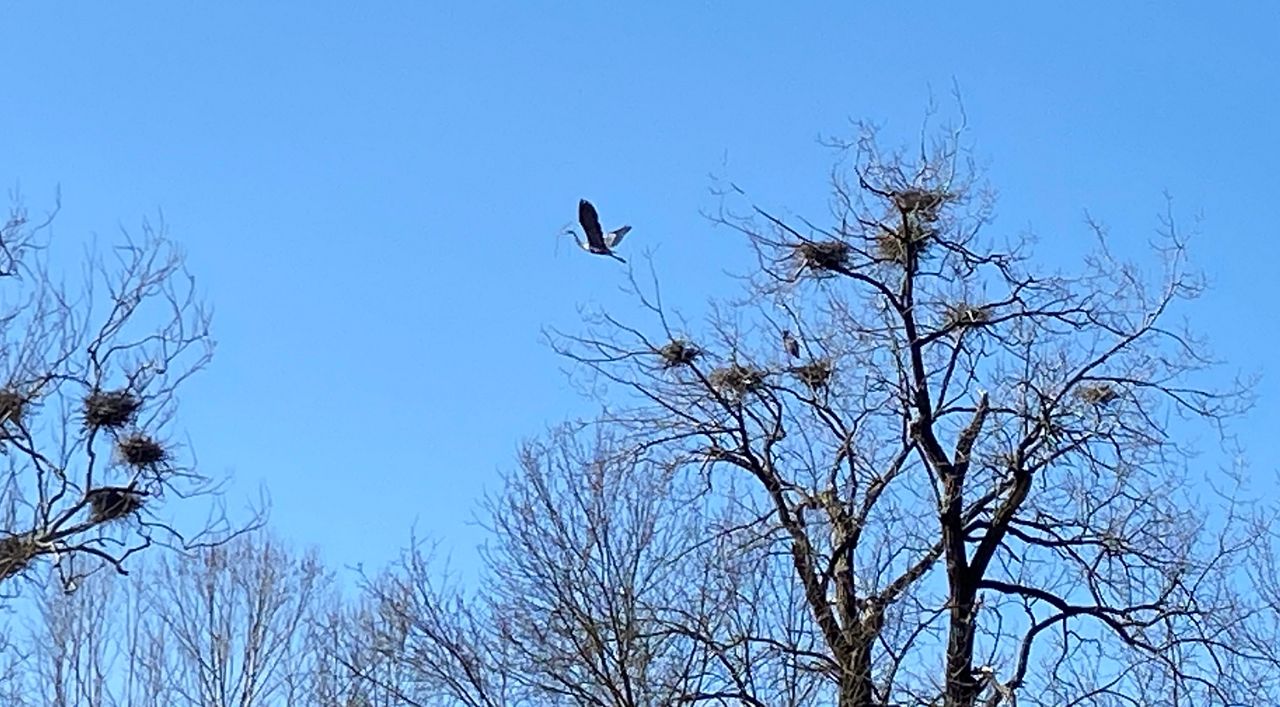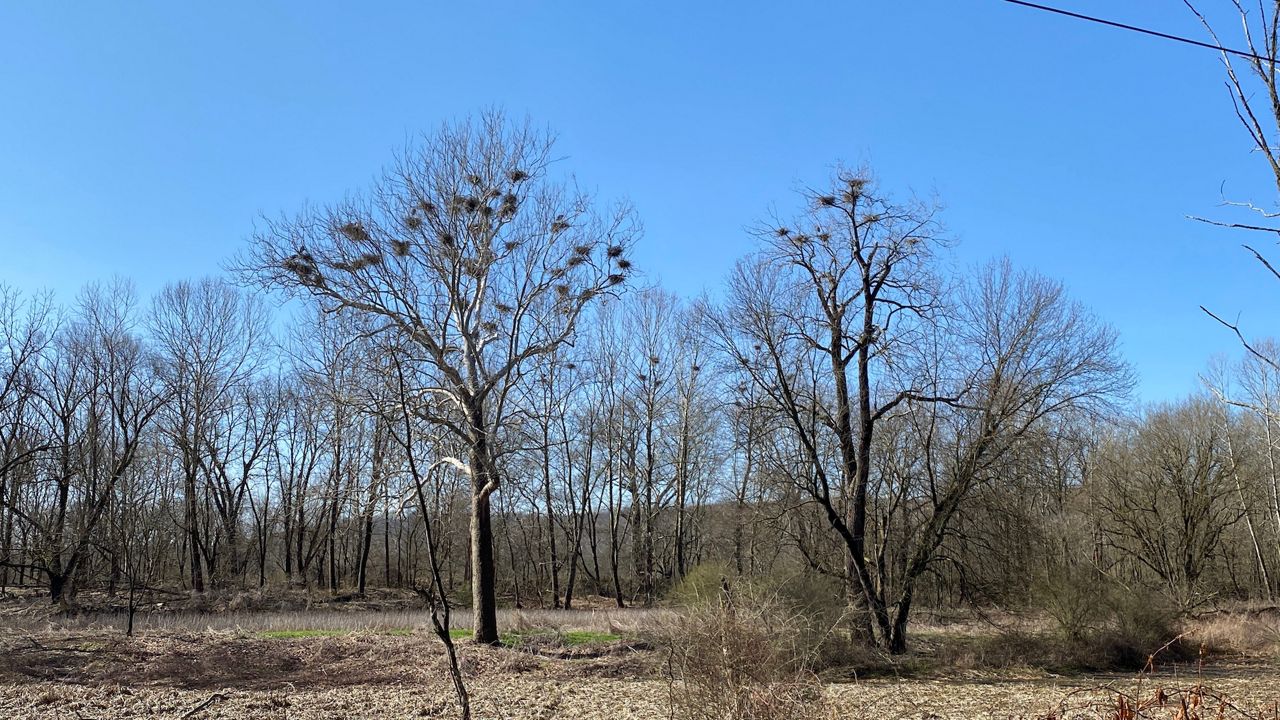AKRON, Ohio — One of the most anticipated springtime events for Greater Akron wildlife enthusiasts is the return of great blue herons each year to nesting grounds in and around the Cuyahoga Valley National Park.
Among the most well-known nesting sites is the Bath Road Heronry in Akron, where bird watchers can pull their vehicles off the road to a paved observation area to watch the birds at work in spring through early summer.
The birds begin returning around Valentine’s Day, with males arriving first for the breeding season, which lasts through June, the national park said.
The birds can be easily observed soaring through the skies, preparing and repairing nests in the tops of tall trees, readying them for hatchlings, as many of the nests are reused year after year. Until the trees leaf, the birds can be seen bringing food to their young.
Blue herons are easy to spot, because they stand about four feet tall and have a wingspan of about seven feet, the national park said.
Not that long ago, the wetlands surrounding the Bath Road nesting colony was outside the boundaries of the national park, making it fair game for potential development.
In 2001, Akron Community Foundation, the city of Akron and the Trust for Public Land banded together to preserve that land in perpetuity, making it the official Southern Gateway to the Cuyahoga Valley National Park, and ensuring the herons have a place to return to each year.

According to the Trust for Public Land, the Southern Gateway comprises 90 acres along the longest stretch of the Cuyahoga River inside the national park boundaries.
Numbers of blue herons have increased dramatically since the national park was established in 1974, in part because of restoration of the Cuyahoga River, the national park said.
For years, volunteer citizens have observed the nesting colonies on behalf of the park, and have reported a loss of some of trees. Other nesting colonies around the national park are located away from trails and roads, the park said.
Another popular colony is located along the Ohio & Erie Towpath Trail near West Waterloo Road in south Akron.




